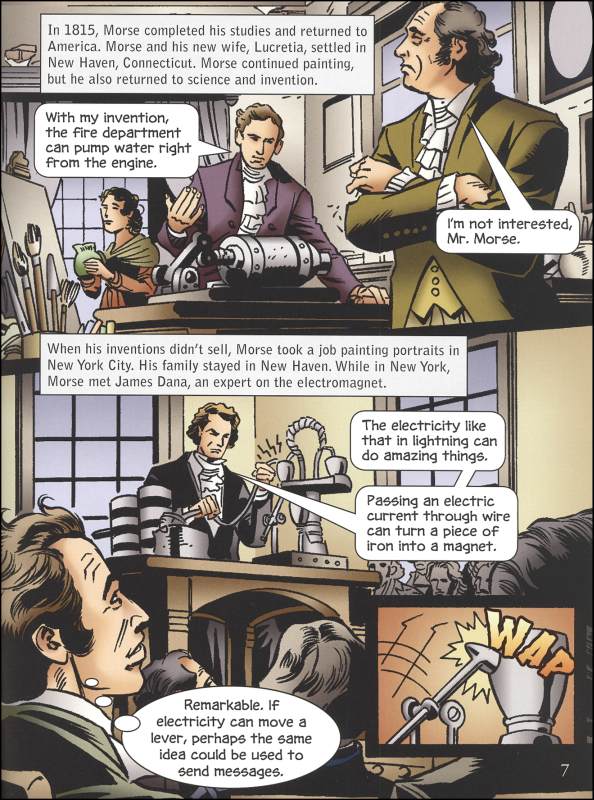

These limitations also lessened the effectiveness of the semaphore, a modern precursor to the electric telegraph. However, such methods were limited by the weather and the need for an uninterrupted line of sight between receptor points. With an engaging text and its graphic rich format, this is a perfect book for readers who are interested in inventions and inventors.Early Forms of Long-Distance Communicationīefore the development of the electric telegraph in the 19th century revolutionized how information was transmitted across long distances, ancient civilizations such as those in China, Egypt and Greece used drumbeats, signal fires or smoke signals to exchange information between far-flung points. Telegraph technology and lines led to the development of the telephone, and the invention of the telegraph led to the creation of the world's first news agency, which is still in operation today. This excellent graphic novel style book not only tells the story of how Samuel Morse developed the telegraph and Morse code, but it also shows readers how this invention truly changed the world. He sent his first message from Washington, D.C, to Baltimore, Maryland.

With the help of a science professor, Samuel was able to extend this range and when he demonstrated the new device to machine experts, he captured their attention and they became interested in investing in his new invention.įinally, in 1844, Morse had a new improved machine to work with, a better code, and telegraph lines in place. He then devised a code which was made up of dots and dashes which could be sent over a wire and received at the other end.Īfter three years of work Samuel created his first machine which could send messages, but it only worked for distances of forty feet or less. He figured out that he could use a battery to make a device which would produce marks on paper. His mother and wife had died in the late 1820's and a grieving Samuel needed to put his energies into something.Īfter talking to Charles Jackson, a chemist who studied electromagnets, Samuel began to experiment with electricity and electromagnets. He did not work on this project much until 1832. He saw that electricity was a powerful force and he wondered if it could be used to send messages. Thankfully Samuel Morse, a young painter who was fascinated by science, developed an interest in electricity. In the early 1800's it took weeks to receive mail and often important messages arrived at their destination too late. Today we have all become very used to be being able to communicate over long distances instantly. Illustrator: Rod Whigham , Keith Williams , Charles Barnett IIIĬapstone Press, 2007 ISBN: 978-0736868464


 0 kommentar(er)
0 kommentar(er)
